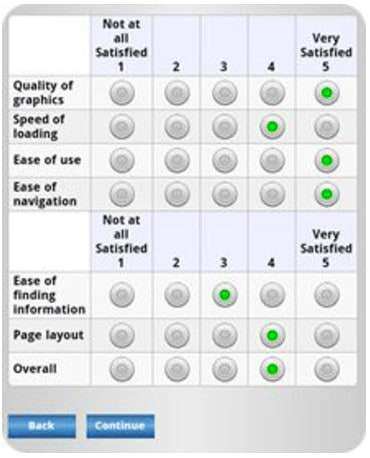High-Quality Content Crawled More Often – Here's How to Create It
Creating regular content for a brand is one of the most challenging aspects of digital marketing.

Some researchers take a hard approach to data, either falling squarely on the side of the numbers (quantitative data) or on the other side, one of focus groups and individual consumer feedback (qualitative data).
But the richest insights come from a paired approach to research, one that seeks both statistically significant findings to define our product’s place in the market as well as a deep understanding of how our product fits into a single consumer’s life.
Why do you need either of these types of research? Learning about your customers means that you can more efficiently answer their needs. A crystal-clear picture of who your consumer is and why they need your product allows you to not only refine your product but ideate even better solutions to your consumers’ problems.


The most common quantitative research methods are customer surveys and questionnaires. If you have questions that drill down into specifics about your company, your market, or your target customer population, you’re looking for quantitative research. It answers questions like who, when, where, how many, how frequently? These are not general, exploratory questions; they’re questions looking for transactional, numerical data.
It will tell you:
While the big two methods of gathering data are surveys and questionnaires, there are plenty of ways to conduct these methods.
When you only need a few questions answered and can’t justify the cost of rolling out a full-scale survey, an omnibus is a good solution. This style groups questions from multiple businesses into one survey so that the time and effort spent recruiting and compensating participants can be spread across several companies who have only a few questions.
Digital or printed surveys are the most common for a reason: They are extremely cost-effective because they are automated. Results roll in without needing a person to make a phone call or interact with every individual respondent. These are most effective when the questions are straightforward, like choosing A vs. B. They’re not so effective in nuanced preference questions, like describing how A vs B makes a participant feel.
The human interaction of phone surveys can make a participant feel more engaged than a digital or printed survey, leading them to give more considered answers – this creates better data. Telephone surveys also allow the researcher to understand a participant’s answer more clearly based on their voice and tone. The statistical reliability of a survey over an interview also remains intact because the questions are consistent across participants. Telephone surveys are best:
A criticism of surveys, in general, is that they don’t allow for conversation or elaboration. While this is a benefit in keeping data consistent, it also leaves findings on the table that a researcher could have used to better understand the participant’s feedback. In face-to-face surveys, a researcher still can’t go off script, but they can make note of a scrunched nose when a product is mentioned or a disengaged stance. Face-to-face surveys are best when the survey questions delve into emotions. An example might be survey questions for emotionally charged products or campaigns, like Dove’s Campaign for Real Beauty. “How does marketing around women’s beauty products today make you feel?”
It’s easy for face-to-face surveys to become interviews, but keep in mind the difference is that surveys do not go off script. The survey researcher must stick to the order of the questions and the exact wording to keep statistical reliability, and in an interview, the researcher has control over the order, pacing, and structure of all questions.
Analyzing quantitative results is easier now with survey tools like SurveyMonkey, SurveyGizmo, and Qualtrics. But those tools won’t be able to remove outliers or include questions that will weed out people who didn’t understand the question and people who rushed through without reading. Those tools still require human manipulation to produce clean, statistically reliable data. This data can be analyzed through various different lenses, including segmentation and personas, to better understand the population who answered the survey and predict their behavior.
Quantitative findings can lead to the following findings and deliverables:

Qualitative research is interested in finding the opinions, beliefs, and values of a target population. The most common forms of qualitative research are focus groups and interviews. While not usually statistically significant, qualitative research is valuable in putting a face to a number and answering questions like, “How?” “Why?” and “Would?” This style of research humanizes your consumer base, allowing more accurate predictions of customer behavior. Qualitative research can also identify problems and opportunities that a survey or questionnaire never would have identified. In qualitative research, we pose probing questions that aim to understand consumers as people. A few drawbacks of qualitative research are (A) results are always open to concern about researcher subjectivity, as results are not numerical and are based on conversations and (B) qualitative research can be time-consuming and expensive.
It will help you:
In focus groups, 6-10 people with something in common (like looking to buy a luxury car or having a baby) have a discussion moderated by a researcher. This style is best for exploring “what if”s, researching new concepts, and testing new product ideas. It helps let participants bounce ideas off of each other, spurring memories but also giving individuals time to think while others are talking. There’s less pressure on each participant to answer spontaneously, as in an interview. The drawback is that it’s very easy for a focus group to become derailed by one or two overpowering or disengaged participants.
Interviews can come in many forms, but the base form is a one-on-one conversation. An interview is meant to find underlying beliefs from a key, representative consumer about some facet of your product or service. A skilled interviewer can recognize when a topic is unproductive versus when a tangent is worthwhile to understand the participant’s perspective.
In a contextual inquiry, a researcher trails the participant in the participant’s normal activities. Contextual inquiries happen “in the wild.” For example, a lunchbox company might observe a customer all day, from packing lunch in the morning to bringing home the empty box at night, to understand the lunchbox’s deficits, what products the participant uses in conjunction with the lunchbox (like Tupperware, silverware, etc), and ask questions.
One of the best ways to fully understand your audience and what’s important to them is through social listening. A social listening tool allows you to monitor and analyze online posts and comments based on an established keyword criterion. By doing this, a brand can analyze the demographics or their online audience, their purchase intent, what they see as the key product attributes, their feelings on your brand versus the competition, as well as category-level conversations.
An article in Harvard Business Review tells this useful story that came out of social listening “A large pharmaceutical company, for example, learned about an unsuspected customer challenge through a single photo on Flickr. The image showed a man wrapping a part of his leg in foil after applying a pain relief ointment. It turned out that the medication left untreatable stains on certain fabrics, hence the protective foil. Executives had been unaware of the problem despite years of conventional consumer research.”
Interviews are common in customer experience research, from usability studies (analyzing how easy it is to use a product, usually a website) to customer journey research (asking a customer to describe their entire relationship with a product, from learning about it to purchase), and more. The basic idea always comes down to asking a consumer about their relationship with a company’s product or service, though.
Qualitative and quantitative research are not at odds; in fact, they inform and enrich one another. One doesn’t come before the other, either. Personal, individualized insights of qualitative research can help us understand the questions we should be asking of our mass market in quantitative research, but wider quantitative research can also help us understand where we need to drill down and ask more questions from just a few consumers. Actually, the best research comes from a cyclical application of both techniques, allowing us to regularly turn from a wide-lens view of our product and its value to a mass market, to a more narrowed scope, focusing on understanding the unique perspectives of just a few people who we impact.
Sign up for our monthly newsletter to receive updates.

Creating regular content for a brand is one of the most challenging aspects of digital marketing.

Many reoccurring themes emerge in meetings with new clients and prospects, but one of the most frequent is that of marketing ROI or, more...

When it comes time to establish annual plans, marketers often struggle with how to choose the most appropriate KPIs.